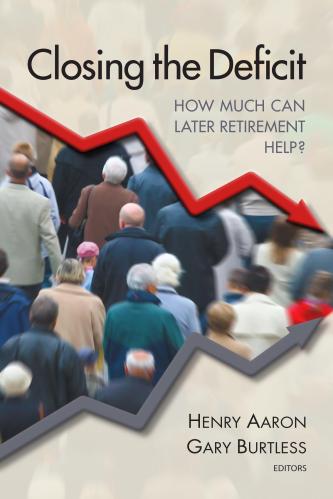On October 25, 2011, Gary Burtless provided comments to the paper “The Material Well-Being of the Poor and Middle Class since 1980” by Bruce Meyer and James Sullivan at the American Enterprise Institute’s event Are the Poor and Middle Class Actually Getting Poorer? Reassessing Prosperity Trends Since 1980.
Bruce Meyer and James Sullivan have spent a great deal of time and effort
trying to persuade us that American living standards have improved over the past
three decades. Further, living standards have improved not only at the very top
of the income distribution, as everyone suspects, but also in the middle and at
the bottom.
I hope Bruce and James have succeeded in persuading most of their
readers, because they’re basically correct. It may seem odd for them to make
this particular claim in the midst of the worse post-World-War-II slump, but
maybe that is exactly the right time to make and defend such a claim.
People who think middle-income living standards have stopped rising, if
they are well informed, are thinking of living standards over a fairly brief period –
say, the last five or ten years, when living standards have been affected by a
steep recession and anemic recovery. Alternatively, if they’re thinking about
living standards over two or three decades, they are only thinking about the trend
in living standards within fairly narrow slices of the population – unmarried men in
their 20s and early 30s who have below-average schooling, for example, or
groups that have been particularly hard hit in the recent slump.
Americans in the broad middle and at the bottom of the distribution have,
on average, seen their real incomes and consumption improve over the past
three decades.
Why is this claim so controversial? There are four main reasons:
- A defective price index, which makes unwary observers think real
incomes are climbing more slowly than they really are. - Household income measures that fail to account for shrinking
household size. If median household income has remained unchanged
(and I’m not saying it has), then shrinking household size means there
is an increase in the amount of income per household member. - Incomplete measures of income, in other words, definitions that exclude
or undercount sources of income particularly important at the bottom
and in the middle of the income distribution than they are at the top. - Finally, inequality has unquestionably increased over the past 30 years
(and in the past 10 years and 20 years). This means that average living
standards have improved faster than median living standards. More of
the economy-wide income gains have been enjoyed by Americans with
a high perch in the income distribution; smaller fractions have been
received by people in the middle and at the bottom.
Improvements in median living standards are nonetheless continuing, at
least if we take a long enough perspective. The plain fact is, however, they are
improving more slowly than they did in the first three or four decades after World
War II. That is especially true if we focus solely on the past 11 or 12 years.
Under any plausible measure of Americans’ income or consumption possibilities,
gains in middle-class living standards have been slower in the recent past than
they were in the earlier post-war period. You cannot put a happy face on a
decade-long period that ends with the longest and worst economic slump of the
post-war era. Rising inequality has certainly made things worse for many folks
now in the middle and at the bottom. If the pain of the slump were more equally
distributed across the nation’s households, many people would certainly feel
better about progress in their living standards. But a deep slump combined with
rising inequality will never be kind to either the poor or the middle class.
I brought 10 slides, and I now have a lot less than 10 minutes to go over
them. They were created to defend the statements I just made and to lend
support to the basic conclusions reached by Bruce and James.
The Brookings Institution is committed to quality, independence, and impact.
We are supported by a diverse array of funders. In line with our values and policies, each Brookings publication represents the sole views of its author(s).









Commentary
Comments on the Material Well-Being of the Poor and the Middle Class since 1980
October 25, 2011